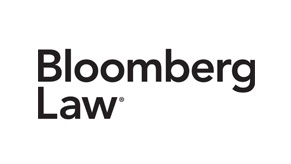The complex patchwork of federal, state and local regulation for employee benefits and workplace safety during the novel coronavirus pandemic can be overwhelming, but one of the best ways to take control in a time of rapid change is to prioritize. With that goal in mind, here are our top COVID-19 benefits compliance considerations that should be prioritized when reviewing your organization’s plan.
Two new laws are a central part of this conversation: The Families First Coronavirus Relief Act (FFCRA) and the Coronavirus Aid, Relief and Economic Security Act (CARES Act). Both laws have a significant impact on benefit plan compliance, changing a broad set of rules from testing and treatment to telehealth and high deductible health plans.
Communicate Clearly and in Multiple Formats
The COVID-19 pandemic, and the many FFCRA and CARES Act-imposed changes to plans, have impacted every organization differently. Though some may not make extensive changes, even small changes can create confusion.
Adding complex legal jargon to your company’s intranet or bulletin board to check the “notice” or “disclosure” box isn’t enough. Instead, your notices should help all plan participants easily understand what’s changing, ideally in multiple formats to be easily understood by workers from all generations.
For example, while those of us in the industry might think a Summary of Material Modification is in plain English, let’s be honest: it’s probably not clear enough on its own. Consider adding a cover email, letter or even a video. Changes to the “big stuff” like enrollment, eligibility rules and premium cost should get special attention.
Communication also applies to COBRA participants who don’t have access to internal message boards but are impacted by plan changes. This is particularly important, as we’ve seen an uptick in COBRA litigation.
Know Your Deadlines
In regulations issued early in the pandemic, the IRS and U.S. Department of Labor issued a temporary rule extending certain deadlines for retirement and health plans, including COBRA and HIPAA special enrollment deadlines. This rule was designed to provide much-needed relief to participants and plan sponsors dealing with the disruption of the growing outbreak.
Under this rule, deadlines were extended until 60 days after the announced end of the COVID-19 National Emergency—a period called the “Outbreak Period.” The National Emergency began on March 1st and is still in effect, thus the end of the Outbreak Period is uncertain.
As an example of the difficulties this creates, consider an employee who has until 60 days after the end of the Outbreak Period to make their COBRA election. Although they’d be required to pay premiums for that entire period, the temporary rule allows them to game the system by playing “wait and see” with medical expenses. With no end of the Outbreak Period in sight, this can be particularly difficult and costly for plan sponsors, especially those with self-insured health plans.
Separately—and not to be confused with the “National Emergency”—the U.S. Department of Health and Human Services recently renewed its determination that a “Public Health Emergency” exists as a result of the pandemic. Under the CARES Act, certain enhanced medical benefits must be offered by plans during this period, currently scheduled to continue through most of January of 2021, unless ended or extended.
This pandemic isn’t limited to the 2020 calendar year, so employers & plan sponsors should keep reminding participants about extended deadlines.
Understand Testing…
…and Your Health Plan
Make sure you’re aware of the availability of COVID-19 testing through the health plan, as well as the downstream financial impact of these services. The CARES Act requires COVID-19 testing to be offered with no cost sharing by all plans—both fully-insured and self-insured—even without prior authorization.
While this makes sense to maximize access, this rule left many wondering which tests are covered and who pays for them. In the confusion, carriers would also limit the types of tests covered or providers would sometimes charge for testing.
However, guidance released in the summer of 2020 by the agencies implementing the CARES Act provided clarity and confirmed that all tests directly approved or authorized by the FDA, or included on the Emergency Use Authorization List, would be covered by the CARES Act protections.
The guidance also confirmed that provider charges for testing that had been prescribed or recommended by the individual’s attending healthcare provider would be covered without cost sharing. Unfortunately, providers continue to charge participants out-of-pocket costs for this testing, so it’s important to clearly communicate how these rules work to participants.
…and Your Return-to-Work Plan
These rules, however, do not apply to COVID-19 testing used for return-to-work screening purposes. There is no requirement for such testing to be provided by employers free of charge. However, it’s important to consider the financial burden placed on employees if these costs are not reimbursed. Additionally, this testing should be administered outside of the health plan due to privacy and HIPAA concerns.
The COVID-19 pandemic has triggered a fast-moving regulatory landscape; issues are changing constantly. No one HR or benefits professional can be expected to monitor all of the guidance and regulatory changes. Instead, we always recommend working with your trusted employee benefits advisor to develop an appropriate plan, communications strategy and return-to-work playbook.
1U.S. Centers for Disease Control and Prevention, “Prevalence of Obesity and Severe Obesity among Adults: United States, 2017–2018”






